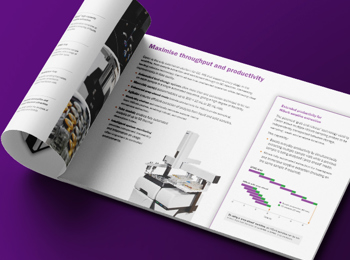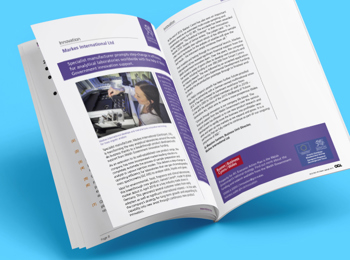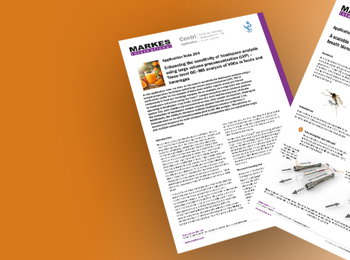
Breathe new life into your ageing GC–MS: State-of-the-art in automated sample extraction and concentration
On-demand webinar
Webinar overview
Modern analytical laboratories still suffer from lengthy and laborious manual preparation steps and low sensitivity. This is the case especially with ageing gas chromatography-mass spectrometry (GC-MS) systems and the need to detect ever-decreasing levels imposed by regulatory bodies. Ingress of water or unwanted volatile interferences from the extraction process always pose an additional challenge, oftentimes resulting in poor-quality data.
Robotic automation is commonly used to reduce preparation steps and increase productivity, and its effectiveness can be improved further with the addition of a sample concentration system. This significantly enhances the sensitivity of VOC/SVOC analysis by HS- and SPME-trap and/or thermal desorption (TD).
This webinar will review how very volatile organics (VVOCs) such as ethylene oxide (amongst other residual fumigants) in foods as well as the gas components (Freons R-12, R-22 and vinyl chloride) in water can be analyzed in accordance with regulations and beyond. This is thanks to the boost in sensitivity augmenting the capabilities of traditional headspace or solid-phase microextraction (SPME) when run on less sensitive detectors. Thus, lower detection limits can be reached while maintaining focused, sharp peaks and good signal-to-noise for confident detection.
Examples will be shown of the adoption of the Centri platform in routine analysis and in those research workflows where full sample characterization is needed to make better decisions. Another inherent benefit of Centri is its compatibility with hydrogen carrier gas, future-proofing ageing GC-MS and safeguarding against rising helium shortages. Centri extraction and concentration platforms easily integrate with existing assets so that maximizing ROI is possible with minimal capital investment.
Key learning objectives
- Understand how tandem trapping technology delivers truly continuous monitoring with no sample blind
- Learn about the sensitivity enhancement achievable by combining your GC–MS with the Markes world-beating backflush focusing technology to address challenging applications.
- See how efficiencies are maintained with unattended sequencing of all sample introduction modes—HS-trap, SPME-trap, and TD—for combined productivity and versatility.
- Understand how in-built multi-gas technology can bring your ageing GC–MS into the future, speed up analysis time, and reduce cost/sample by allowing the use of hydrogen carrier gas with no hardware changes, as well as remove dependency on gas bottles by using generators.
- Hear about full sample characterization using complementary techniques with complete automation on a single platform (Centri 360), which is ideal for researchers needing to obtain maximum sample detail.
Who should watch?
- Laboratories needing dedicated, high-throughput, high-sensitivity analysis by headspace, SPME, and SPME Arrow or TD to answer growing business demands
- Scientists interested in simplifying and expediting volatile organics analysis, whether for discovery and development or routine monitoring and quality control
- Environmental, food safety, and human health scientists investigating target lists of trace level VOCs in a variety of sample types by GC–MS
- Laboratory managers, directors, and supervisors interested in how state-of-the-art analytical instrumentation can enhance existing or ageing GC–MS assets with minimal capital investment, expanding capabilities, maximizing ROI, and providing a competitive edge







